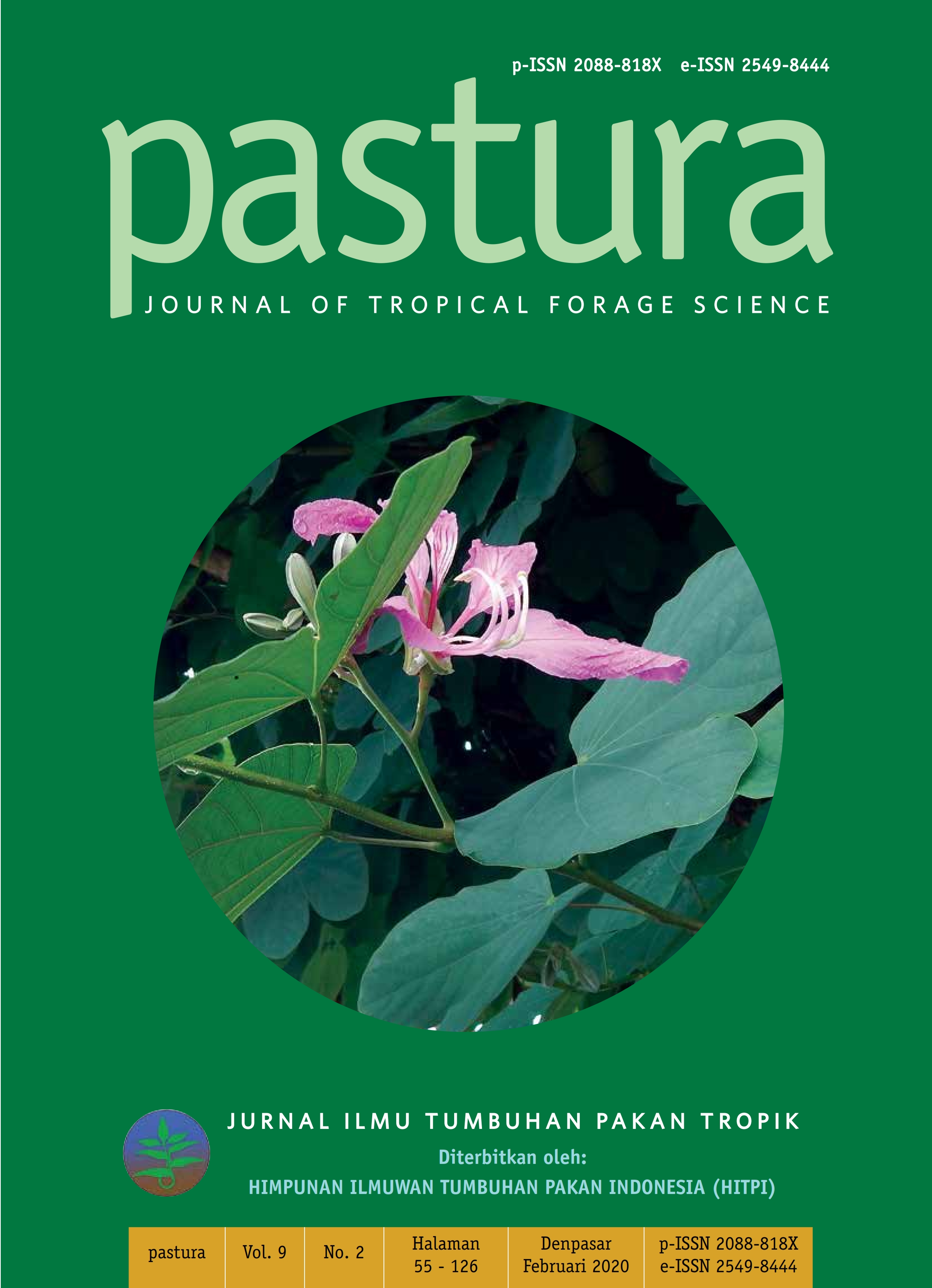MORPHOLOGICAL CHARACTERISTIC OF SWORD BEAN (Canavalia gladiata (JACQ.) DC.: FABACEAE) AND ITS POTENCY AS FODDER
MORPHOLOGICAL CHARACTERISTIC OF SWORD BEAN (Canavalia gladiata (JACQ.) DC.: FABACEAE) AND ITS POTENCY AS FODDER
Abstrak
Indonesia has many tropical plants which could be developed as a forage or fodder, one of them is sword
bean (Canavalia gladiata (Jacq.) DC.). Sword bean is a legume plant that distributed in tropical region and
easily grow even in poor soil, but it also known as the under-utilization plant. Some researchers have done
analyzed the nutrient and anti-nutrient compounds in sword bean seeds, but there is lack of research that
studied the potencies of this legume plant as a fodder. To perform the further research development, it is
necessary to study the morphological characteristic of this plant to avoid taxonomic ambiguity. Therefore,
this study aims to know the morphological characteristics of sword bean and its potency to developed as
alternative fodder. The research was carried out during May 2019 to March 2020. The seeds began to sow in
May (as the 1
st
month) and characterized when there were pods that were ripe in March (the 10
month).
The vegetative phase lasts for 4-5 months before the plants start flowering. The generative phase varies in
duration, especially in pod maturation. Pod maturation lasts for 5-6 months, even more. The results showed
that sword beans (Canavalia gladiata) had attractive morphological characteristics on large leaf sizes,
fragrant white flowers, large pods, and bright red seeds. Sword bean leaves and seeds have the potential
to be developed as alternative fodder. The seeds contain various superior nutrient compounds as a fodder,
such as high content of protein, fiber, carbohydrate, and nitrogen free extract.
Keywords: Canavalia, fodder, sword jackbean, tropical forage
##plugins.generic.usageStats.downloads##
Authors who publish with this journal agree to the following terms:
- All articles published by Pastura Journal Of Tropical Forage Science are made available under an open access license worldwide immediately. This means everyone has free and unlimited access to the full-text of all articles published in Pastura Journal Of Tropical Forage Science, and everyone is free to re-use the published material given proper accreditation/citation of the original publication. Open access publication is supported by authors' institutes or research funding agency by payment of a comparatively article processing charge for accepted articles (See Author Fees). Pastura Journal Of Tropical Forage Science publish articles under the Creative Commons Attribution License.
- Authors are able to enter into separate, additional contractual arrangements for the non-exclusive distribution of the journal's published version of the work (e.g., post it to an institutional repository or publish it in a book), with an acknowledgement of its initial publication in this journal.
- Authors are permitted and encouraged to post their work online (e.g., in institutional repositories or on their website) prior to and during the submission process, as it can lead to productive exchanges, as well as earlier and greater citation of published work (SeeThe Effect of Open Access).





